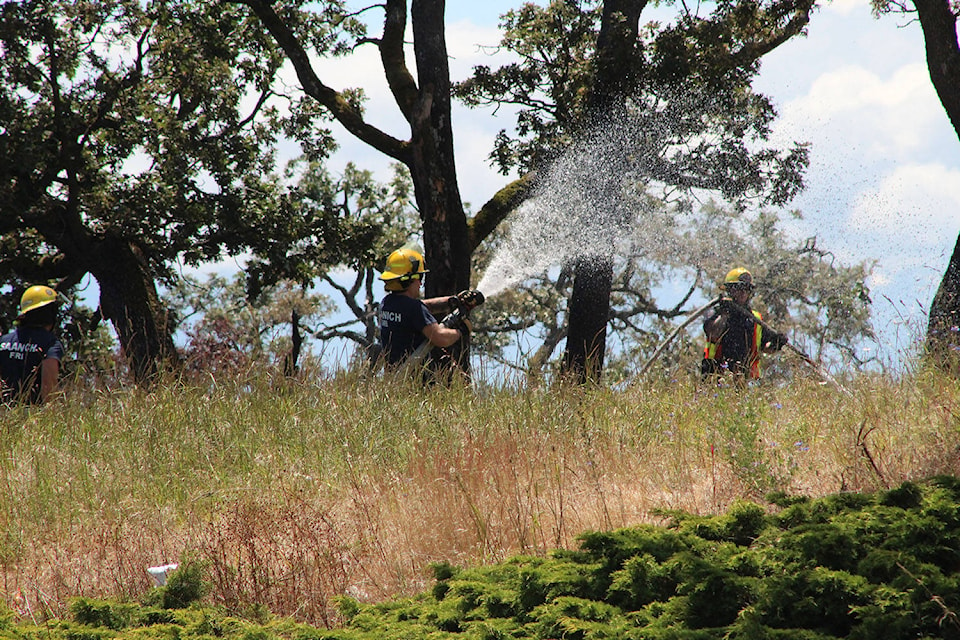An unseasonably dry March has led to more than 20 recent grass fires across B.C., with nearly all caused by people.
This spring is shaping up to be quite different from the previous year, when flooding and heavy snow packs brought wet conditions well into May.
RELATED: Seven small wildfires burning in B.C. as warm weather brings dry conditions
RELATED: Unseasonable heat melts heavy snowpacks in B.C., making more floods likely
B.C.’s chief fire information officer Kevin Skrepnek told Black Press Media grass fires are not uncommon this time of year, but it is around the same officials start to see a growing number of human-caused fires.
“The risk isn’t a top of mind for people, given that we aren’t in that core summer period,” he said in a phone interview from the service’s Kamloops headquarters Tuesday.
Crews were deployed to two sizable fires in recent days, the first burning more than 250 hectares in Kamloops and the second still burning at roughly 15 hectares northeast of Squamish.
Today I spoke with @KevinSkrepnek, chief fire information officer at @BCGovNews about how we have entered the first of B.C's two mini wildfire seasons. From now until mid-May, almost all fires sparked are human-caused. More to come @BlackPressMedia #BCWildfire2019 pic.twitter.com/lLKmY8ugNC
— Ashley Wadhwani (@ashwadhwani) April 2, 2019
Roughly 40 per cent of all wildfires in B.C. are human-caused, with most the rest caused by summer lightning strikes. But those storms don’t usually happen until June.
“Every fire we see this time of year is preventable one way or another,” Skrepnek said.
Most of the time, it’s open burning that gets out of control.
“When they are burning, they are quite aggressive, they can grow quite quickly. Then generally as we get a hold on them, they don’t smoulder for too long because it was burning up those fine fuels as opposed to an actual forest fire where big trees are burning.”
Wildfire official hopeful for a rainy May
Skrepnek said B.C.’s wildfire season is broken up into two portions: between now and mid-May, when the grass begins to dry after the remnants of winter melt away, and then from the Canada Day long weekend until about September.
In between, the amount of rain we get can determine how aggressive the sparks will be during summer.
READ MORE: Fire officials warn of ‘overwintering’ fires as winter melts away
In the meantime, crews have begun prescribed burning in vulnerable regions. Controlled burns aim to prevent forest fires by burning through top layers of fuel, as well as help restore ecosystems that have adapted to seasonal infernos. They can also be part of First Nation cultural practices.
A lot of preparation goes into prescribed burns, Skrepnek said. “If we’re putting fire out on the landscape, we have to make sure we put contingencies in place, we don’t want it to turn into a wildfire, and we have to wait for the right conditions.”
Discarded cigarettes, campfires, ATVs all run the risk of sparking a fire
Skrepnek urged caution to outdoor enthusiasts and others who may forget grass fires can happen outside the summer season.
Discarded cigarettes and campfires left burning are two common causes, but heat from the exhaust pipe of an ATV or off-road vehicle can be all it takes for long grass to catch.
“You only have to look back to the last few summers to see how bad things can get.”
@ashwadhwani
ashley.wadhwani@bpdigital.ca
Like us on Facebook and follow us on Twitter.
